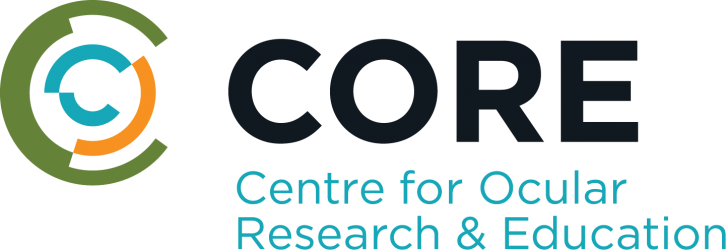Publications
Showing 25 results out of 126 in total.
Jones L. The Battle Against Contact Lens Discomfort and Dropout Synoptik, Oslo, Norway, April 18, 2024
Jones L. The Great Debate: Silicone Hydrogels or Hydrogels? Synoptik, Oslo, Norway, April 18, 2024
Jones L. TFOS Dry Eye Workshop III - Management and therapy of dry eye disease Tear Film & Ocular Surface Society Conference, Venice, Italy, Nov 1, 2024
Jones L. Compliance and its impact on solutions ECLSO, Istanbul, Turkey, April 26, 2024
Jones L. Impact of contact lenses on the ocular surface ECLSO, Istanbul, Turkey, April 27, 2024
Jones L, Guthrie S, Stahl U, Jabeen A.
Contact Lens Compendium: Contact Lenses & Solutions Available in America. Vol 5
2024.
Jones L, Guthrie S, Stahl U, Jabeen A.
Contact Lens Compendium: Contact Lenses & Solutions Available in Canada. V50
2024.
Jones L, Morgan P. Corneal Infiltrative Events (CIEs) and Contact Lenses: Avoidable or Not? NCC, Veldhoven, Netherlands, Mar 10, 2024
Jones L, Morgan P, Closson C. Contact Lens Comfort Drivers: Fact Vs. Myth - Option 1 Global Vision Summit 2024, Virtual Session, Mar 20, 2024
Jones L, Morgan P, Closson C. Correcting Low Astigmatism with Toric Soft Contact Lenses – Is It Worth It? - Option 1 Global Vision Summit 2024, Virtual Session, Mar 20, 2024
Jones L, Morgan P, Closson C. Multifocal Contact Lens Fitting: Maximizing Success - Option 1 Global Vision Summit 2024, Virtual Session, Mar 20, 2024
Jones L, Morgan P, Closson C. Contact Lens Comfort Drivers: Fact Vs. Myth - Option 2 Global Vision Summit 2024, Virtual Session, Mar 20, 2024
Jones L, Morgan P, Closson C. Correcting Low Astigmatism with Toric Soft Contact Lenses – Is It Worth It? - Option 2 Global Vision Summit 2024, Virtual Session, Mar 20, 2024
Jones L, Morgan P, Closson C. Multifocal Contact Lens Fitting: Maximizing Success - Option 2 Global Vision Summit 2024, Virtual Session, Mar 20, 2024
Jones L, Schallhorn J, Ng AY, Alster Y, Bosworth C. Sign and Symptom Improvements Rates Among MGD Patients Following Treatment with AZR-MD-001 for 6 Months Tear Film & Ocular Surface Society Conference, Venice, Italy, Nov 2, 2024
Jones L, Schallhorn J, Stapleton F, Alster Y, Bosworth C. AZR-MD-001 Opens Meibomian Glands, Improves Meibum and Tear Quality Resulting in Increased Wear Time and Desired Lens Use in Patients With CLD The Association for Research in Vision and Ophthalmology, Seattle, WA, May 6, 2024 [ Show Abstract ][ PDF ]
Purpose: Contact lens discomfort (CLD) is a common problem for practitioners and wearers. Individuals with CLD experience episodic or persistent ocular discomfort symptoms related to lens wear, including visual disturbances, decreased wear time, or discontinuation overall. AZR MD 001 (AZR) is an ophthalmic keratolytic, keratostatic, and lipogenic ointment containing selenium sulfide, developed to improve signs and symptoms of MGD. This study evaluated if biweekly AZR can open meibomian glands and improve comfortable wear time, allowing patients with CLD who continue to challenge their ocular surface, tear film, and meibomian glands with contact lens use, to wear their contact lenses as desired.
Methods: Adults with CLD and evidence of meibomian gland obstruction (n=67) were randomized (1:1) to AZR 0.5% (n=34) or vehicle (n=33) applied twice weekly at bedtime for 3 months in a Phase 2, multi-center, single-masked parallel-group study (NCT05548491). Key efficacy endpoints evaluated were the change from baseline (CFB) at month 3 compared to vehicle in meibomian gland secretion score (MGS), Tear film stability (TBUT) post lens removal, and total and comfortable wear time.
Results: At month 3, AZR 0.5% significantly improved signs (MGS; TBUT) and lens wear time vs vehicle. Mean [SE] CFB in MGS was 13.8 [0.67] vs vehicle 3.8 [0.68], p<0.0001; TBUT was +3.31 s [0.70] vs vehicle 0.65 s [0.72], p<0.0001; and total comfortable wear time was +192 min [38.07] vs vehicle +2.9 min [38.01], p<0.0001. Significantly more patients, who were unable to comfortably wear contact lenses as desired at baseline, were able to wear them as long as desired by month 3 (42.5% vs vehicle 6.2%, p=0.0015). Improvements over vehicle were first seen on Day 14 in MGS (Mean [SE] CFB 3.2 [0.97] vs vehicle 0.8 [0.91], p<0.0007) and at Month 1 for comfortable wear time +41.6 minutes [24.04] vs vehicle -14.2 minutes [24.04], p=0.0111. All treatment-emergent adverse events (TEAEs) (47/47, 100%) in the 0.5% group were mild to moderate. There were no discontinuations due to a TEAE.
Conclusion: AZR MD 001 significantly improved the meibum and tear film quality, resulting in improved wear time in patients with CLD compared to vehicle starting as early as 8 doses of treatment. AZR demonstrated efficacy, safety, and tolerability, with no major adverse events observed.
Jones L, van Tilborg M. Contact lens wear and artificial tears, a good or a bad marriage? Synoptik, Oslo, Norway, April 18, 2024
Jones L, Willcox M. Contact lens care is the key to improve contact lens discomfort - From recent research The 66th Annual Meeting of the Japan Contact Lens Society, Tokyo, Japan, Jul 15, 2024
Laughton,D., Hill,J. S., McParland,M., Tasso,V., Woods,J., Zhu,X., Young,G., Craven,R., Hunt,C., Neitz,J., Neitz,M., Chalberg,T., Jones,D., Wolffsohn,J.
Control of myopia using diffusion optics spectacle lenses: 4-year results of a multicentre randomised controlled, efficacy and safety study (CYPRESS)
BMJ Open Ophthalmology 2024;9(1):e001790 [ Show Abstract ]
Aims To evaluate the myopia control efficacy of Diffusion Optics Technology (DOT) spectacle lenses in children over a 4-year treatment period.
Methods CYPRESS Part 1 (NCT03623074) was a 3-year multicentre, randomised, controlled, double-masked trial comparing two investigational spectacle lens DOT designs (Test 1, Test 2) and standard single vision Control lenses in 256 North American children aged 6–10 years. Children completing Part 1 (n=200) were invited to enrol in CYPRESS Part 2 (NCT04947735) for an additional 1-year period. In Part 2, Test 1 (n=35) and Control groups (n=42) continued with their original lens assignment and the Test 2 group (n=21) were crossed over to Test 1 (DOT 0.2) lenses. The co-primary endpoints were change from baseline in axial length (AL) and cycloplegic spherical equivalent refraction (cSER).
Results Test 1 spectacle lenses demonstrated superiority to the Control in both co-primary endpoints: with a difference between means (Test 1−Control) of −0.13 mm for AL (p=0.018) and 0.33 D for cSER (p=0.008) in Part 1 and −0.05 mm for AL (p=0.038) and 0.13 D for cSER (p=0.043) in Part 2. Comparing treatment effects in Part 1 and 2 suggests that COVID-19 public health restrictions negatively impacted treatment efficacy in study years 2 and 3.
Conclusion DOT 0.2 spectacle lenses are safe and effective at reducing myopia progression, with additional benefit evident in year 4 of wear. These results support the hypothesis that a mild reduction in retinal contrast can slow myopia progression in young children. The unprecedented disruption in participant schooling and lifestyle during the COVID-19 pandemic may have depressed treatment efficacy in Part 1.
Luensmann D. Can we mask corneal astigmatism with soft lenses? https://contactlensupdate.com/2024/06/19/can-we-mask-corneal-astigmatism-with-soft-lenses/ 2024, 78:
Luensmann D. Fast Forward to the Future: Regaining Accommodation: Which Way to Go? Contact Lens Spectrum 2024;39, July:
Luensmann D. Practitioner Reference: Optimize Multifocal Soft Lens Fitting
https://contactlensupdate.com/2024/10/03/practitioner-reference-optimize-multifocal-soft-lens-fitting/ 2024, 80:
Mahil A, Jong M. Truth or myth: Only high levels of myopia increase the risk of ocular disease and permanent vision loss? Optician: https://www.opticianonline.net/content/features/truth-or-myth-only-high-levels-of-myopia-increase-the-risk-of-ocular-disease-and-permanent-vision-loss-answer-myth/ 2024, February 1:
McKinney M, Irving E, Jones D, Christian L. Parental Compliance in Response to Vision Screenings in Waterloo, Canada American Academy of Optometry Meeting, Indianapolis, Nov 7, 2024 [ Show Abstract ]
Purpose: Pediatric vision screenings can be offered universally or targeted to high-risk groups. Universal screening programs screen all children for a vision problem. In 2018, the province of Ontario mandated a universal vision screening program for all kindergarten children (age 4-6 years). Following the screening, all parents are informed of the result and are recommended to bring their child to an optometrist for further evaluation. This study evaluates parental compliance in seeking vision care for their child after a vision screening in the Region of Waterloo (ROW).
Methods: All parents/guardians of kindergarten children who participated in the ROW vision screening program were invited to participate in the study. Parents who consented to the study completed a survey to identify 1) if their child had seen an optometrist prior to screening, 2) the result of the vision screening (pass/refer) and 3) whether an appointment was made with an optometrist following the screening. Additional questions were asked if parents reported they did not seek or plan to seek follow-up vision care following the screening, and vision screening results were obtained by public health to confirm result accuracy.
Results: 108 parents from 66 schools responded to the survey from October 2022 to December 2023. 54% (58/108) of parents reported their child had seen an optometrist within 18 months prior to the vision screening. 61% (66/108) of respondents reported their child passed the vision screening (no visual concerns detected). Of those parents that reported a pass, 47% (31/66) incorrectly reported their child passed the screening when they had actually been referred. Finally, 44% (48/108) of parents reported they took their child to an optometrist following the vision screening. Of the 56% (60/108) of parents that did not seek eye care, reasons why included: recently had an eye exam and did not require another one (42%, 25/60), lack of time (28%, 17/60), eye exams perceived not to be important (25%, 15/60), and cost (5%, 3/60).
Conclusion: Over half (54%) of the children screened were already under the care of an optometrist prior to the screening and less than half (44%) of parents were prompted to obtain eye care, including 25% who had already had a previous examination. To improve program efficacy, a targeted vision screening program and increased public education on the difference between vision screenings and eye exams, and the importance of early vision care for children is recommended.
Mishra,S. K., Baidya,S., Bhattarai,A., Shrestha,S., Homagan,S., Rayamajhee,B., Hui,A., Willcox,M.
Bacteriology of Endotracheal Tube Biofilms and Antibiotic Resistance: A Systematic Review
Journal of Hospital Infection 2024;147(May):146-157 [ Show Abstract ]
Background
Bacteria commonly adhere to surfaces and produce polymeric material to encase the attached cells to form communities called biofilms. Within these biofilms, bacteria can appear many times more resistant to antibiotics or disinfectants. This systematic review explores the prevalence and microbial profile associated with biofilm production of bacteria isolated from endotracheal tubes and its associations with antimicrobial resistance.
Methods
A comprehensive search was performed on databases PubMed, Embase, and Google Scholar for relevant articles published between January 1, 2000 and December 31, 2022. The relevant articles were exported to Mendeley Desktop 1.19.8 and screened by title and abstract, followed by full text screening based on the eligibility criteria of the study. Quality assessment of the studies was performed using the Newcastle-Ottawa Scale (NOS) customized for cross-sectional studies. Furthermore, the prevalence of antimicrobial resistance in biofilm-producers isolated from endotracheal tube specimens was investigated.
Results
Twenty studies encompassing 981 endotracheal tubes met the eligibility criteria. Pseudomonas spp. and Acinetobacter spp. were predominant isolates among the biofilm producers. These biofilms provided strong resistance against commonly used antibiotics. The highest resistance rate observed in Pseudomonas spp. was against fluoroquinolones whereas the least resistance was seen against piperacillin-tazobactam. A similar trend of susceptibility was observed in Acinetobacter spp. with a very high resistance rate against fluoroquinolones, third-generation cephalosporins and carbapenems.
Conclusion
Endotracheal tubes were associated with colonisation by biofilm forming bacteria with varying levels of antimicrobial resistance. Biofilms may promote the occurrence of recalcitrant infections in endotracheal tubes which need to be managed with appropriate protocols and antimicrobial stewardship. Research focus should shift towards meticulous exploration of biofilm-associated infections to improve detection and management.





